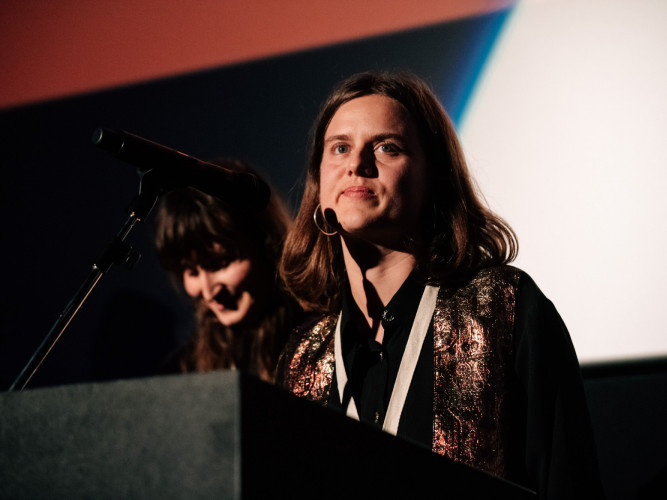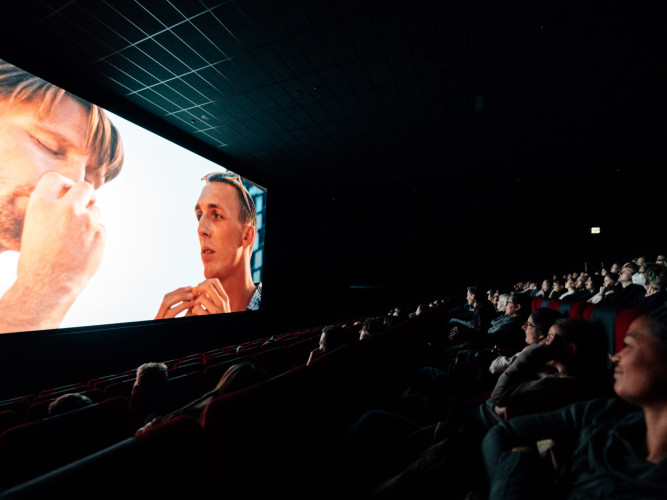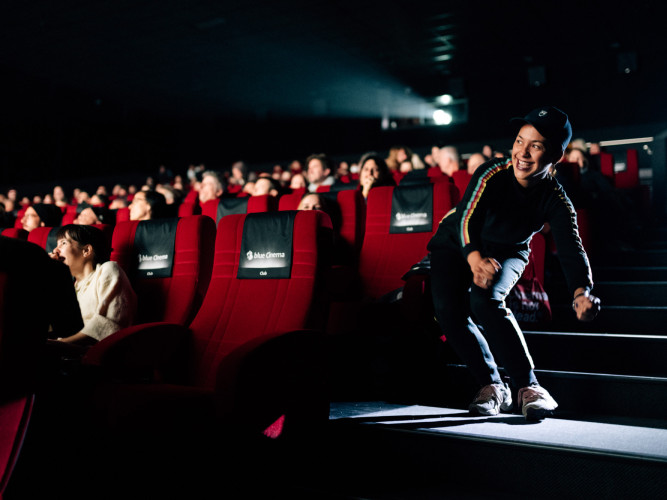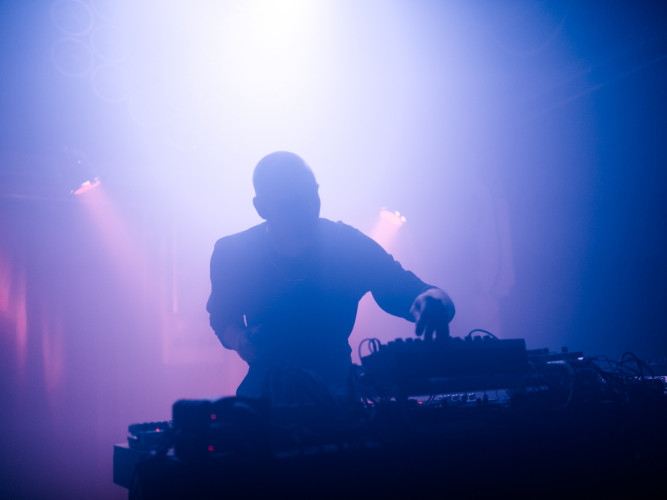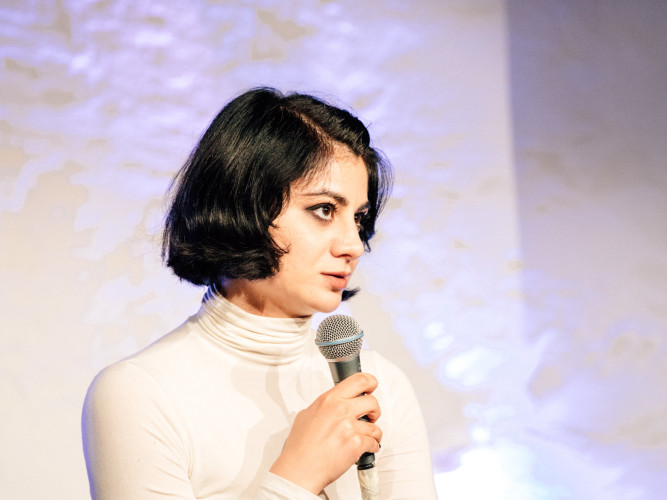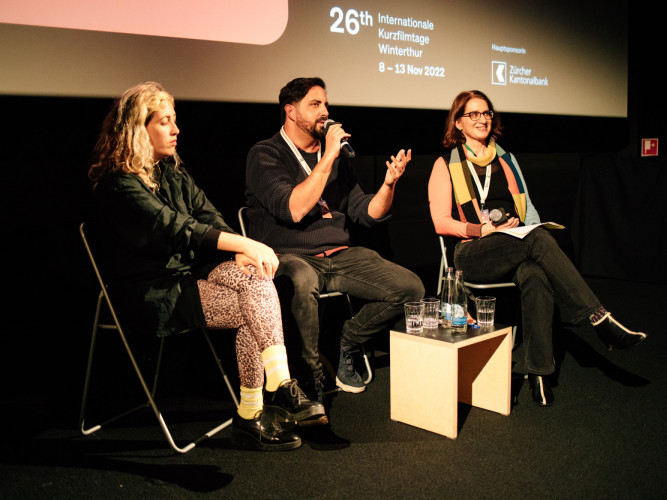The medium of film may have its origins in the photographic image, but its essence lies in the perception of movement through space and time. The moving image needs movement within the image – movement is what sets film apart from other mechanically reproducible arts. It is no wonder, then, that dance as a cinematic motif has been a throughline of film history. Dancing bodies have been popular onscreen since the earliest days of film. The elaborately produced musicals from Hollywood’s golden era (1927–1960), choreographed down to the smallest detail, are still a benchmark for the industry today. Film dramas from both the independent and mainstream sectors that use song and dance to break with the norms of certain genres are currently enjoying great popularity. Dance is also ubiquitous in the digital world today, with video platforms like YouTube and TikTok providing a global stage for viral dance trends. Last but not least, dance motifs are becoming increasingly important in current short films, which is why we are dedicating three programmes to dance and motion this year.
Movement is inherently ambivalent, especially when perceived on a screen. Within the rigid and one-way cinematic apparatus, the viewer’s body remains motionless – the motion only happens onscreen. Even when captured on film, dance is fleeting and must be danced to unfold its full power. In our programmes, we thus go beyond the fascination of movement captured onscreen, allowing audiences to also experience dance in its social and psychological contexts.
Dance and movement can be seen as moments of liberation. Dance has the ability to overcome boundaries: between artistic disciplines, between rigid genre categories, but also in a political sense. Those who dance demand space for their own bodies and their own being. Those who dance themselves into a frenzy leave behind everyday life, creating transcendent spaces of pure physicality that are full of possibilities. Where words fail, the body begins to speak. As a means of expression and communication, dance and movement have the potential to connect people across cultural and linguistic boundaries and to express deep emotions.
Our three programmes reflect these perspectives: Dance with Me invites us to join the characters onscreen in breaking out of everyday life and to find ourselves in dance. We see how new communities emerge and identities shift when dance disrupts the usual order. Your Space Is My Dancefloor explores the socio-political implications of dancing bodies taking up space. Here, dance becomes self-empowerment, a demand for visibility, and an act of resistance. The programme shows how movement can question power relations, shift norms, and redefine spaces – physically, politically, and symbolically. Finally, The Movies traces the interaction between motion and the moving image, inviting audiences on a journey through the various dance film genres of film history. The selection includes playful experiments from different periods, attempts at bridging the gap between moving image and immobile audience, and the commercialization of dance images and the style-defining power of choreographed bodies in pop culture cinema.
Curated by Inken Blum and Laura Walde
The MoviesDance has been a popular cinematic motif throughout film history. This is not surprising, given that motion is the essence of both film and dance. «The way I see it: movies move. [...] With roots in photography, a movie is an appearance plus movement», says filmmaker James N. Kienitz Wilkins in his short film «This Action Lies» (2018).
Early filmmakers such as the Lumière brothers repeatedly captured the «Serpentine Dance» of Loïe Fuller, the American pioneer of modern dance. This early film is defined by its relationship with dance: Fuller’s flowing movements, enhanced by light and the fluttering fabric, appear like purely visual motion, turning the new, still exotic medium of film into a stage for visual ecstasy. Here, dance is not only a motif, but also a model for the new medium.
«RaumZeitHund» by Nikolaus Eckhard (2011) is a tongue-in-cheek reflection on the historical connection between photography, film, and movement. The film explicitly references the famous «Animal Locomotion» photo series by Eadweard Muybridge, the inventor of chronophotography, a photographic technique from the 19th century that captures sequences of movement in individual, consecutive images. Instead of graceful horses or elegant greyhounds, however, Eckhard uses an Alpine Dachsbracke, filming the dog in extreme slow motion, at 150 frames per second, for comic effect.
In the silent comedy «Le Piano irrésistible» by Alice Guy, one of film history’s first female directors, music is literally contagious and encourages dancing: a man plays the piano in his apartment and the neighbours, initially annoyed, soon start dancing uncontrollably. The «disease» spreads until everyone is addicted to the rhythm, forcing the musician to keep playing. Film scholar Kristina Köhler, in her study The Dancing Film, explores the idea that movement in film has an affective, infectious quality. She describes early films that use rhythmic, choreographed movements to create a kind of «physical communication»: a visual dynamic that is transferred to the audience.
Oskar Fischinger’s «Allegretto» is a dance of lines, colours, and shapes without a body – an «instrumental dance», in the words of dance theorist Fritz Böhme. Presenting film as visual music and pure motion, it’s an experiment and a counterweight from the historical avant-garde, made at a time when the still relatively young medium of film was already being pushed into a narrative corset. «Capriccio for TV» by James Seawright and choreographer Mimi Garrard (1968) and «Hysteresis» by Robert Seidel (2021) show how notions of dance and movement have evolved in media art, resulting in digital choreographies and transformations of light and structure. The theoretical concept of «cine-dance» describes combinations of dance and film in which the two work together in equal measure to make an artistic statement. Rather than just filming dance, cinematic techniques (camera, editing, sound, space, time) shape, expand, and transform dance. In «Hysteresis», the performance of queer dancer Tsuki is recorded, digitally processed and deconstructed with AI, and then projected back onto her body – a cycle of perception and transformation that blurs the boundaries between original and reproduction.
Winfried Junge’s documentary «Wenn jeder tanzen würde, wie er wollte, na!» (1972) is a multilayered portrait of youth dance culture in East Germany and an example of subtle cinematic observation of social norms and individual forms of expression. The film contrasts two dance worlds without pitting them against each other. At the Glöckner dance school in Berlin, young people learn ballroom dancing and rules of conduct. The lessons are as much about social etiquette as they are about rhythmic movement. By contrast, in the clubhouse of railroad workers in Berlin-Karlshorst, young people dance spontaneously to rhythmic beats. Interviews show that they experience this form of dancing as an expression of freedom and self-determination.
«Wait for Me» by Galen Hooks represents the enormous reach and popularity of the music and dance video genre since the 1980s. Galen Hooks is currently among the most sought-after choreographers in Hollywood. She combines commercial dance forms (hip-hop, jazz, heels) with narrative elements. Her choreographies are both technically demanding and conceptually profound – a rare combination in the commercial dance sector. Galen also choreographs, directs, produces, and performs her own short films, breaking with traditional roles in the dance industry, where especially female dancers are often treated as nothing but «performing bodies», to quote Hooks.
The programme comes full circle with Michael Bell-Smith’s «Battleship Potemkin Dance Edit (120 BPM)», a reinterpretation of Sergei Eisenstein’s 1925 classic. As the media artist explains: «I’ve separated the film into its constituent shots and time-stretched them one by one to the exact same length, one half of a second. I then replaced the soundtrack with a one-second dance loop synced to the cuts.» Through his reconfiguration, Bell-Smith replaces the editing structure of the original film (seminal in its use of montage) with the «dumb, visceral, metric montage favored by dance visuals and music videos», offering up a new context for the film’s stark imagery and revolutionary narrative.
The Movies is a journey through the history of dance films in cinema and television – and a reflection on the moving image itself.
Curated by Laura Walde and Inken Blum
In Zusammenarbeit mit:Das Tanzfest Winterthur
Mit freundlicher Unterstützung von: 